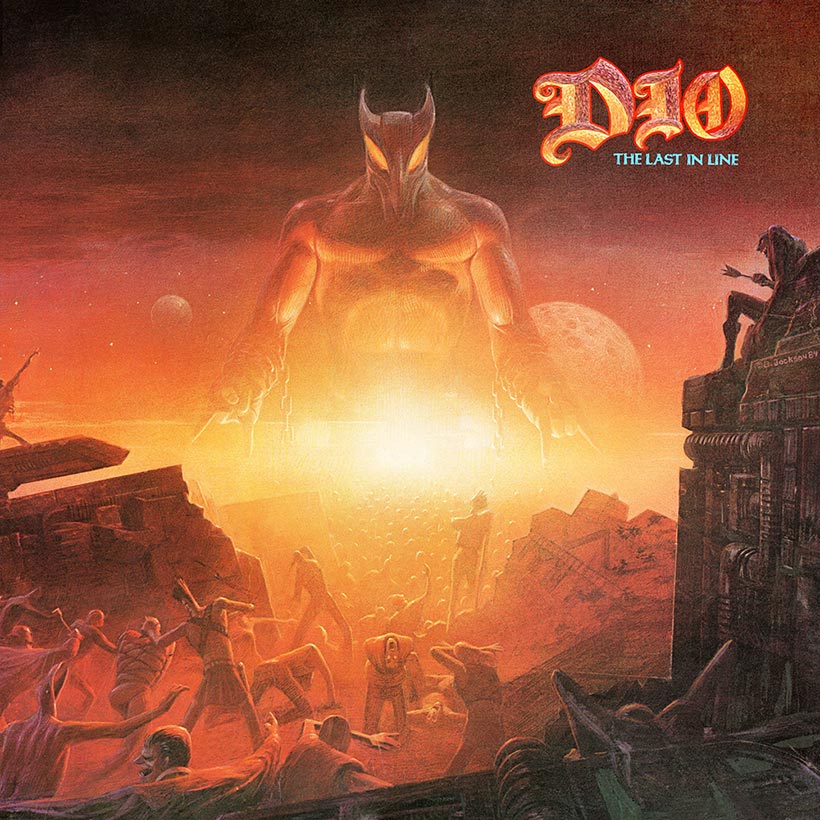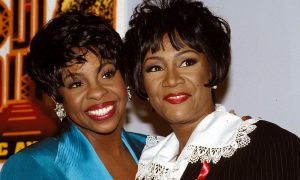Having formed in 1982, out of the ashes of one of Black Sabbath’s periodic line-up implosions, Dio hit the ground running with 1983’s immaculate and highly accessible Holy Diver. Spawning two US Top 40 hits in the shape of the churning “Rainbow In The Dark” and the dramatic, widescreen titular song, the album wowed the critics (with Kerrang! accurately proclaiming it to be “a perfect melodic metal album”) and charted highly on both sides of the Atlantic, earning the band a platinum disc in the States. Creatively, Dio were on a high after the success of Holy Diver and they were still firing on all cylinders as they decamped to Colorado, with the addition of keyboardist Claude Schnell, to record their second album, The Last In Line, at the Caribou Ranch in the Rocky Mountains.
Listen to The Last In Line now.
The success was particularly vindicating for Ronnie James Dio, who, after fronting first Rainbow and then revitalizing Black Sabbath, was staking his claim to being one of the best frontmen in heavy metal.
When Ozzy Osbourne quit Sabbath after 1978’s Never Say Die!, the band’s loyal fanbase logically assumed their heroes’ days were numbered. Yet, after Tony Iommi and Geezer Butler took an inspired gamble and replaced Ozzy with Dio, Sabbath rapidly underwent a remarkable renaissance. Two consummate albums, Heaven And Hell and 1981’s pulverizing The Mob Rules yielded gold discs on both sides of the Atlantic, while 1982’s critically acclaimed double set, Live Evil, captured the band’s formidable live prowess in all its dark and sinister glory.
Amid this activity, Black Sabbath negotiated another significant line-up change, with ex-Derringer drummer (and long-term Sabbath disciple) Vinnie Appice replacing Bill Ward. Playing his first show with Sabbath in Hawaii during the Heaven And Hell tour at just a few hours’ notice, Appice survived the baptism of fire and his driving percussive skills provided the ideal bedrock for The Mob Rules.
The future for the rejuvenated Sabbath appeared rosy early in 1982, but after tour fatigue and squabbles over the mixing of Live Evil opened up a rift in the band, Dio and Appice quit to form their own outfit. Christened simply Dio, the new band was soon completed with the addition of ex-Rainbow/Wild Horses bassist Jimmy Bain and guitar wunderkind Vivian Campbell, previously of Northern Irish NWOBHM contenders Sweet Savage.
The band still recall this early period in their history with fondness, with Vivian Campbell later revealing, in an interview with online publication My Global Mind, “For me, The Last In Line and Holy Diver were both the same in terms of quality, as they were both strong records.
“I personally felt more integrated in The Last In Line, but with Holy Diver we were all in the studio at all times. Even when you completed your part, you were there offering encouragement to everyone else. It was collaborative and a group effort.”
Dio adopted this same approach with The Last In Line: their synergic team effort resulting in one of the great metal albums of the 80s. Propelled by Appice’s hyperactive military snare, the band came roaring out of the traps on the self-explanatory “We Rock,” before pushing the velocity up to neo-Motörhead levels of intensity on the relentless “I Speed At Night” and affording Campbell the opportunity for blistering solos on “Breathless” and the exhilaratingly edgy “Evil Eyes.”
As Holy Diver had already proved, however, Dio were capable of much more than muscle, flash, and pyrotechnics. On The Last In Line, they again revealed their subtler side on the reflective opening segment of the album’s defiant “Children Of The Sea”-esque titular song and the lush, anthemic US hit “Mystery,” which featured one of Dio’s most measured vocals and delicate keyboard embroidery from Schnell.
Released on July 2, 1984, and boosted by Dio’s relentless touring – which found them criss-crossing the US, the UK, and mainland Europe over the next 12 months – The Last In Line connected with discerning metal fans the world over. Highlighting the genre’s continued crossover potential, the album went Top 5 in the UK and smashed into the Top 30 of the Billboard 200 in the US, earning a platinum disc and paving the way for Dio’s third classic in a row, 1985’s Sacred Heart.
The album also lent its name to the group that formed in 2012, two years after the death of Ronnie James Dio. Initially comprising of Vinny Appice, Vivian Campbell, Jimmy Bain, and Claude Schnell, with the addition of vocalist Andrew Freeman, with a view to paying tribute to their work in Dio, the group have since evolved. Their studio album, 2016’s Heavy Crown, featured original material, along with new recruits Phil Soussain and Erik Norlander replacing the late Jimmy Bain and Claude Schnell, on bass and keyboards, respectively.




